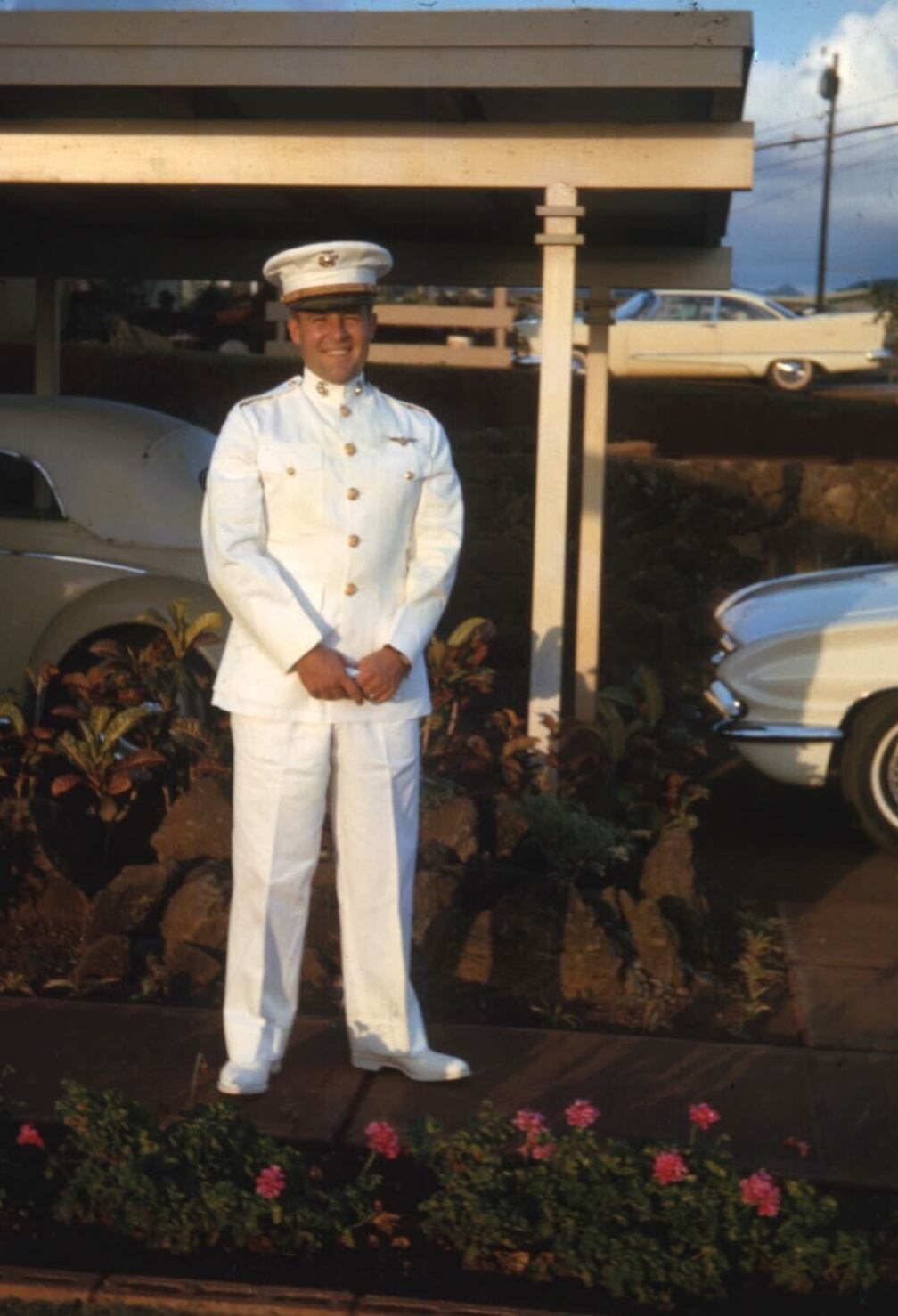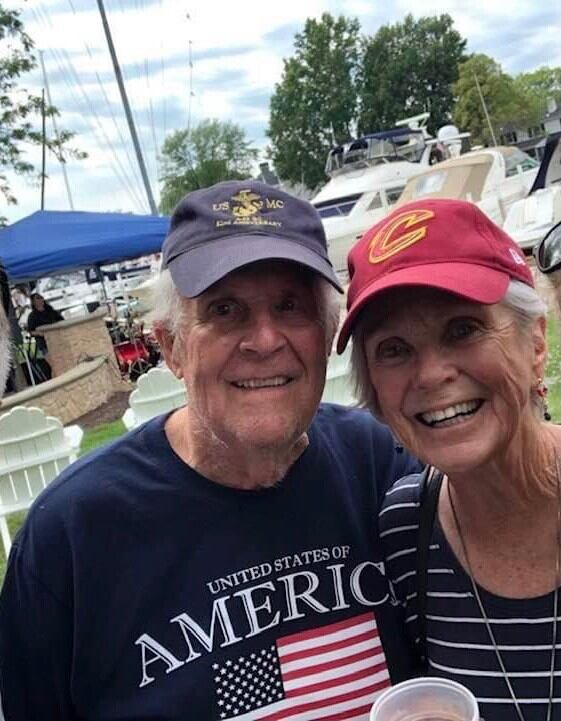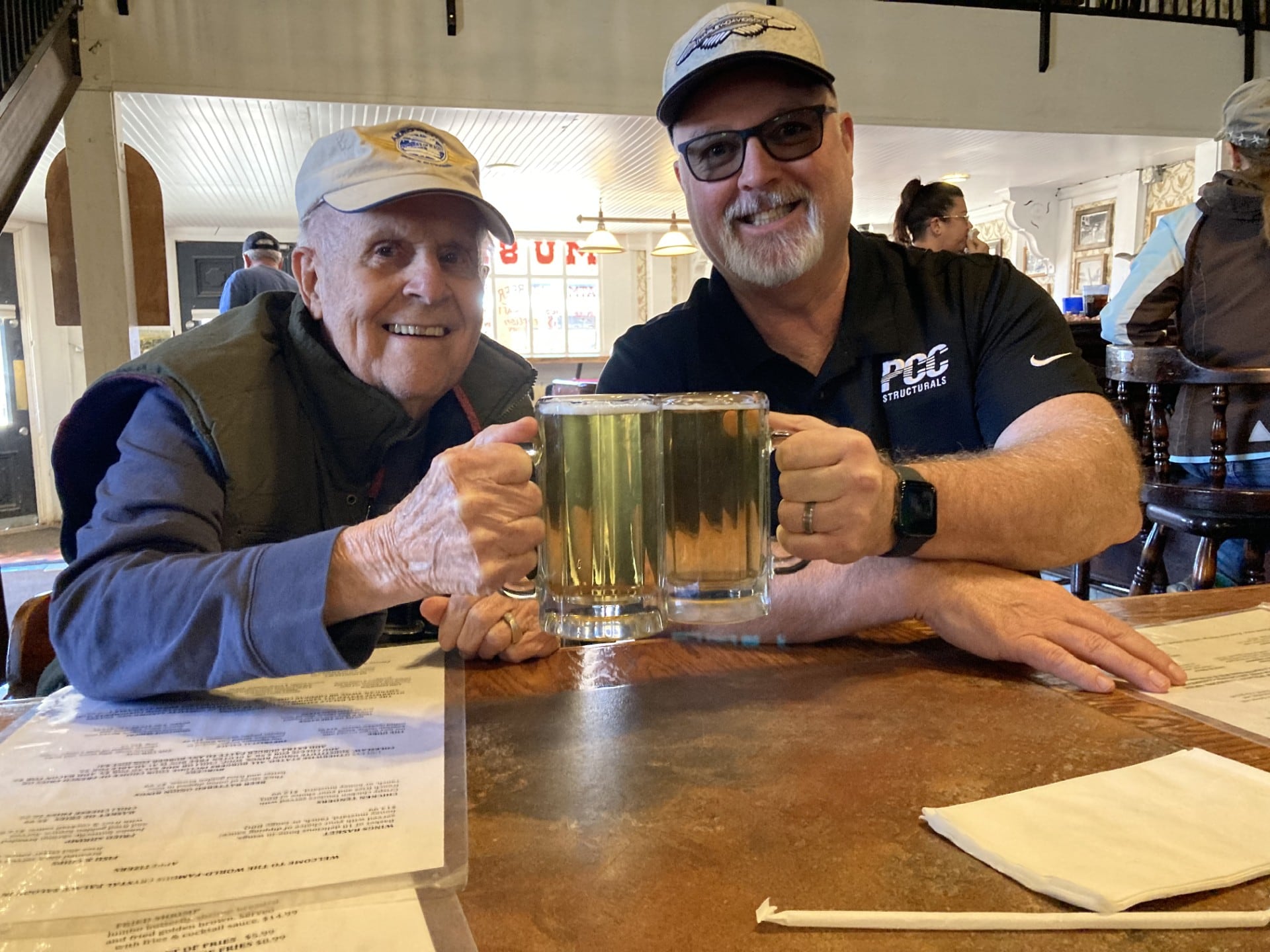By the summer of 1965, just months after the 9th Marine Expeditionary Brigade landed at Da Nang, the intensity of the Vietnam War was surging. Ramping up, too, were the rules of engagement.
President Lyndon B. Johnson was reportedly quoted as saying American pilots could not bomb an outhouse without his approval. Frustrated pilots found themselves “flying into heavily defended areas on predictable flight paths that exposed them to great risk while yielding often token results,” Stuart I. Rochester wrote in “The Battle Behind Bars.”
It was in this environment that then-Capt. Harlan Page Chapman and his fellow Marines of Fighter Squadron 212 found themselves during the opening months of the war. More than 30 American aviators had already been killed or presumed missing in action, while more than a dozen were captured.
After six frustrating and challenging months, Chapman was soon to discover that Johnson’s outhouse quip was, in reality, all too real.

Born in 1934 in Elyria, Ohio, Chapman commissioned as a 2nd Lt. in the U.S. Marine Corps through the Navy ROTC program at Miami University in June 1956, serving for over a decade before he’d find himself peering down into North Vietnam’s dense jungles from the cockpit of his Vought F8 Crusader.
During a mission on Nov 5, 1965, Chapman’s strike group was tasked with pounding a heavily defended railroad and highway bridge deep within enemy territory of Hai Duong. Hitting the target required a perilous high-speed, low-level approach, according to Chapman’s Distinguished Flying Cross citation.
“As pilot of the last aircraft of a major strike group of 32 strike aircraft on target, he bravely and skillfully maneuvered his aircraft, in spite of the intense and lethal anti-aircraft fire, dived on the target, and delivered his bombs on the bridge,” his citation reads.
Strafed by anti-aircraft fire, Chapman was forced to eject, dislocating his shoulder in the process.
With that, Chapman became the first Marine aviator shot down in North Vietnam.
“There was Vietnamese all around me,” Chapman later recalled in a 2015 interview with The Chronicle. “I was conscious after a very soft landing, and I’m over my knees in mud — I wasn’t going anywhere. The local militia got me and paraded me around, and I ended up in the [Heartbreak section of] Hanoi Hilton that night.”
With his legs shackled and arms tied tightly behind his back, Chapman began to endure the first of many interrogations.
“[They] Pulled out a gun,” he told The Stockdale Center. “Threatened to shoot me … and after a while the pain got so bad that I knew I had to do something … so I gave them names like Clark Kent … just all sorts of false names.
“That went on for too long. I felt like hell that I didn’t stick to name, rank, and service number. You felt like you’ve really failed, you know if I was tough enough…”
Chapman was then placed adjacent to several other aviators in a cell block, where communication between prisoners was strictly forbidden.

Men were thrown into solitary, locked in irons, strung up by ropes and beaten when they were caught trying to communicate, according to historian Geoffrey Norman.
Still, it was worth the risk for many. Using a method known as the “tap code,” prisoners were able to communicate and establish an organization.
“They’re in the same deep shit you’re in,” he told The Stockdale Center, recalling the budding camaraderie within the cell blocks.
Still, he conceded, he had never felt more alone.
The Marine would endure over seven years in the infamous prisoner of war camp, spending 2,657 days in captivity before becoming the first Marine Corps POW of the Vietnam War to be released during Operation Homecoming on Feb. 12, 1973.

“It would be difficult, if not impossible, to relate the treatment of over seven years of captivity in the space allotted,” Chapman recalled to the Columbus Federal Voice. “However, I can sum up my opinion of the treatment by saying it was basically cruel. While in captivity, I was tortured many times, using ropes, cuffs, isolation and beatings.”
Despite his suffering, Chapman harbored no animosity toward the Vietnamese people, his wife, Frances “Fran” Chapman said.
“He was not a public prisoner of war,” she told The Chronicle. “Harlan was very quiet about it. He thought it was much more important that people know who he is now and his character. ... He didn’t tout being a prisoner.”
“He was very private about it,” Darold Hessel, Chapman’s stepson and a military veteran, told Military Times. “Except maybe when we’re young, he nagged us and said, ‘You know, at least in prison we had toothbrushes. Make sure you brush your teeth every day.’
“He came into the family when I was nine and he seemed like a superhero. He just was physically fit and morally strong and just so impressive to be around. ... He’s an American hero.”

Despite leading a quiet life removed from the public eye, Chapman’s story may have caught the eye of the wardrobe department from the 2021 blockbuster “Top Gun: Maverick.”
According to the U.S. Naval Institute, the vintage G-1 leather flight jacket Tom Cruise’s character wore to perfection in the 1986 “Top Gun” had been altered for the sequel.
“The jacket supposedly belonged to Maverick’s father, who flew Vietnam-era F-4 fighters,” but eagle-eyed viewers noted that the USS Oriskany and 3rd Marine Air Wing patches on the front of Maverick’s jacket may have been an homage Chapman, who was shot down the same day Maverick’s fictional father was said to have been downed.
Upon his release, Chapman took command of Marine Fighter/Attack Squadron 314 in El Toro, California, where he served from July 1974 until his retirement two years later.
Chapman was diagnosed with Parkinson’s disease and early-stage dementia in 2017. He died on Monday, May 6, 2024, his family confirmed with Military Times.
Lt. Col. Harlan Page Chapman was 89 years old.
Claire Barrett is the Strategic Operations Editor for Sightline Media and a World War II researcher with an unparalleled affinity for Sir Winston Churchill and Michigan football.




